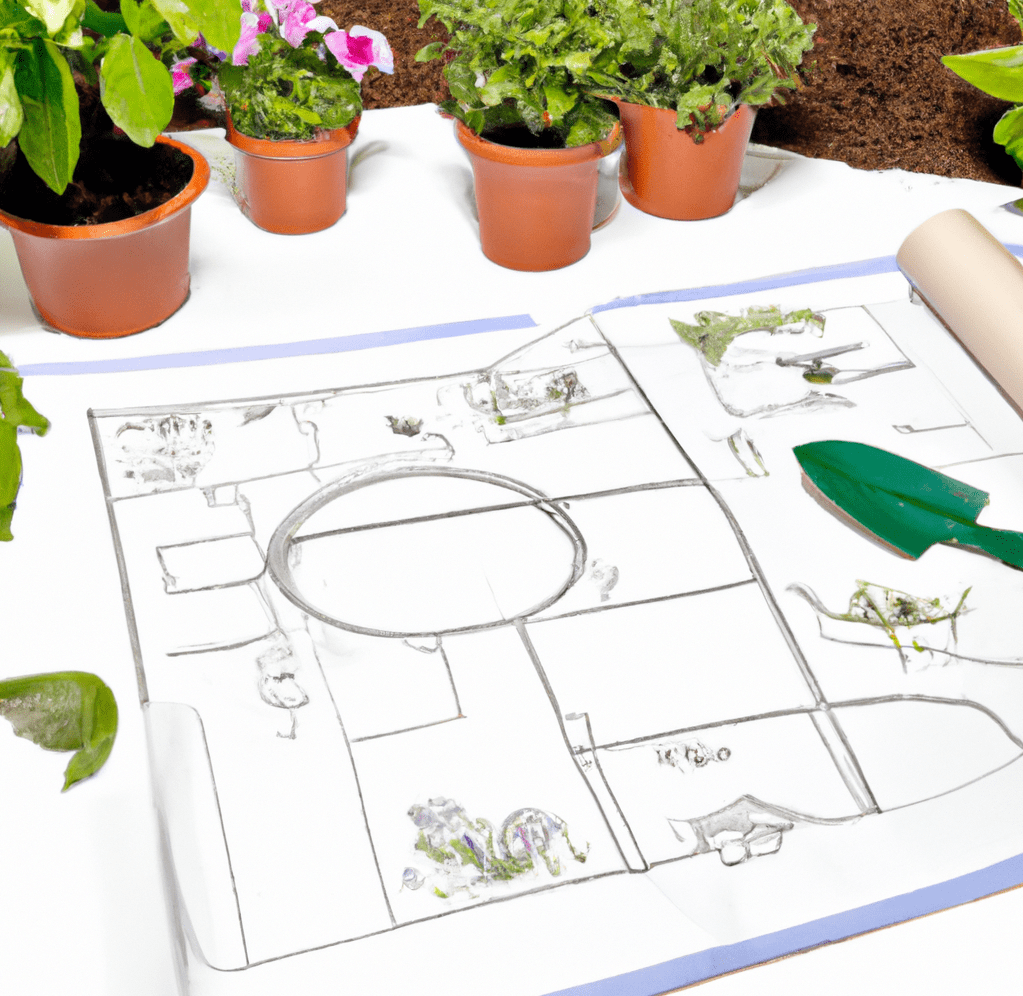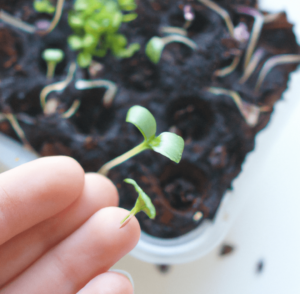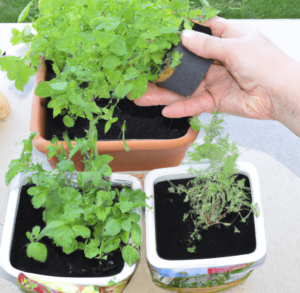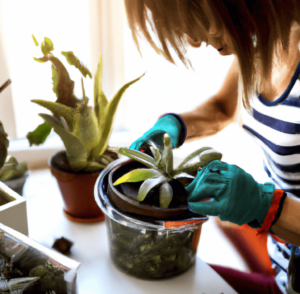Whether you’re learning about gardening in extreme climates or looking for the best flowers for this year, you need to know how to create a garden plan. You can make sure that your garden satisfies your demands and improves the aesthetics of your outside area by carefully arranging it. Here’s what you need to know on one page!
Assessing Your Garden Site
The first step in how to create a garden plan is assessing your space whether you’re a newbie or a pro:
- Patio: If you have a patio, think about how much direct sunlight it gets each day. While some plants and trees like shade, others need full sun. Make sure to pick plants that will thrive in the conditions of your patio.
- Area: Take your planting space’s dimensions into account. If you have a tiny yard, you might want to concentrate on plants that don’t get too big or think about growing in containers. On the other hand, if you have a big yard, you might want to add bigger trees and shrubs to make your garden look more established.
- Check the soil’s quality at the location of your garden. Consider enhancing its fertility by adding compost or other soil amendments if it is deficient.

Measuring the Size and Shape of Your Garden
In learning how to create a garden plan, you’ll need to make sure that the measurements are perfect:
- Identify the garden’s perimeter: Measure the length of each side as you stroll around the perimeter of your garden.
- Keep an eye out for any strange shapes: Measure the length of the curves or angles in your garden if it is not a plain rectangle or square.
- Keep track of the measurements: Use a measuring tape to make a rough drawing of the area or write down the dimensions for each side of your garden.
- Assessment of solar exposure: Keeps track of how much of your garden is exposed to the sun. This will be crucial for both plant selection and layout planning.
Identifying the Location of the Sun, Shade, and Wind Patterns
When you’re learning how to create a garden plan, you need to be aware of where the sun, shadow, and wind patterns are. By doing this, you can be sure that your plants will have access to the right kind of soil, the right amount of sunlight, and wind protection for optimum growth.
Different plants require different amounts of light; some grow in full sun, while others prefer partial shade. You may choose plants that thrive in those conditions by keeping track of the sun’s position in your garden throughout the day. This will help you identify the regions that get the most sunlight.
The development and health of your plants can also be impacted by wind patterns, especially if they are in an exposed location. Consider planting windbreaks or selecting species that are more wind-tolerant to safeguard your plants from wind damage.
Soil quality is another important consideration in gardening, in addition to sunlight and wind. You can choose plants that are best suited for specific soil types in different regions of your garden or potager, increasing their likelihood of success.
Evaluating the Soil Type, Drainage, and Existing Vegetation
Understanding the soil type, drainage, and existing vegetation in the area is crucial as you learn how to create a garden plan:
- Soil sample: Dig a hole in your garden and look at the texture and soil content to identify the type of soil there. A nearby extension agency can analyze a sample of soil to evaluate its pH and nutrient content.
- Drainage: After a rainstorm, watch how the water moves through the area to assess the drainage in your garden. To determine how long it takes for the water to drain, you can also drill a hole and fill it with water.
- Existing Plant Life: Make a note of any existing plants, such as trees, shrubs, and flowers, in your garden. Think about whether you want to keep these plants or whether you want to get rid of them to make a place for new ones.
Setting Your Garden Goals
An important part of learning how to create a garden plan is setting your goals for the perfect space:
- Function: Give some thought to the services your garden should provide. Do you want a location to host parties, a place to produce your own food, or just a quiet getaway from the stress of everyday life? Knowing your objectives can help you make the best choices for plants and other design components.
- Design: Consider the general design you want for your garden. Do you choose a more casual, natural look or a more formal, structured appearance? This aesthetic should be reflected in the plants and garden accents you choose.
- Maintenance: Consider the degree of maintenance you are prepared and able to provide. Pick plants and gardening methods that suit your schedule and level of expertise.
Determining the Purpose of Your Garden (e.g. Vegetable Garden, Flower Garden, etc.)
Finding a purpose for your garden is the best way to learn how to create a garden plan. This will enable you to maximize the space you have, whether it is a big backyard, a tiny patio, or something in between.
For instance, if growing fresh veggies is something you’re interested in, a vegetable garden might be the best option for you. A flower garden, on the other hand, might be a better option if you’re wanting to spruce up your outdoor area. When determining what kind of garden to develop, take into account elements like the quantity of sunlight your garden receives, the quality of the soil, and the amount of upkeep you’re willing to perform.
Identifying the Plants and Features You Would Like to Include in Your Garden
As you learn how to create a garden plant, you’ll need to narrow down the plant you want. A list of the plants and accents you want in your garden should also be included. Prior to making any arrangements, it’s crucial to take your wants and preferences into account.
What do you want your garden to accomplish? Do you wish to design an area for entertaining and unwinding or a sanctuary for wildlife? Do you have any particular plants or design elements in mind, like a garden or a water feature?
If you are unsure of the kinds of plants that will flourish in your region, think about speaking with a specialist. They can help you design a garden that is both useful and aesthetically beautiful by giving advice on the best plants and features for your particular location and requirements.
Considering Any Special Needs or Restrictions (e.g. Wheelchair Accessibility, Children’s Play Area, etc.)
As you learn how to create a garden plan, you should take into account any unique requirements or constraints you may have. This can entail creating a children’s play area, requiring accessibility for people with mobility impairments, or designating a space for a vegetable garden.
Make sure the garden or patio area is accessible and simple to use if you or a member of your family has mobility concerns. Raised beds, wide walkways, and other elements that make it simpler for people to enjoy the area can all be examples of this.
If you have kids, you might think about designating a space for them to play. A play structure, sandbox, or other elements that promote outdoor play and physical activity can be included in this.
Designing Your Garden
Now that you’ve learned how to create a garden plan, you can think about its design:
- When selecting plants for your garden, take into account their eventual growth and the amount of sun or shade they will receive in various garden regions. For a unique and dynamic garden, think about combining a variety of plants with various textures, hues, and blooming periods.
- To make the most of your gardening space, if you have a tiny yard, think about using raised beds or container planting. A tree or two can be included in a bigger space to provide the garden structure and shade.
- Define your patio space. Your patio can serve as both a central feature of your garden and a gathering place for visitors. Choose home and garden-inspired furnishings and accents, and think about including a fireplace or fire pit for chilly evenings.
Sketching Out a Rough Plan of Your Garden
Learning how to create a garden plan is making a rough draft too. You can do this by:
- Drawing out the various garden spaces, including the patio, tree areas, and any other locations you intend to add, is a good place to start.
- Make a list of the various plants you want to use in your garden and consider how they would work best together.
- The plants that will grow well in each part of your garden will depend on how much sunlight each region gets.
- Keep in mind any unique elements, like a pond or fountain, that you would like to incorporate into your garden.
- So that you can readily access every region of your garden, don’t forget to add trails or walkways in your design.
You will have a great foundation for developing a lovely and useful garden space by paying attention to these suggestions.
Choosing Plants and Features That Complement Each Other and Fit Within Your Goals
Now that you’re learning how to create a garden plan, you’ll need to choose every shrub and flower in it. When choosing plants, take into account the dimensions and shape of your garden area, as well as the amount of water and sunlight it receives. For instance, you may select compact, low-maintenance plants that won’t grow too big and take up too much space if you have a tiny garden with a limited area.
If you want to give your garden a lush, tropical vibe, you can use tall, exotic flowers and plants with luxuriant foliage. When choosing features for your garden, it’s crucial to take the intended use of the space into account in addition to selecting plants that go well together.
To make it simpler to produce and harvest your products, for instance, you may pick raised garden beds when setting up a vegetable garden. If you’re designing a tranquil outdoor area, you might decide on a fountain or a pergola with seating and shade.

Planning for Seasonal Changes and Color
When you’re learning how to create a garden plan, you want it to be beautiful even as the seasons change. This means taking into account the colors and plant development patterns, as well as the varying weather conditions. You may design a garden with advanced planning that is not only lovely in the spring and summer but also adds interest and color in the fall and winter.
Choose a variety of plants with various bloom periods and foliage hues to give your garden color all year long. You might select perennials that bloom in the fall or spring bulbs that bloom in the summer.
Additionally, during the winter, evergreens and plants with colorful foliage can give interest and structure. Thinking about the sun and shadow patterns in your garden area is a crucial part of planning for seasonal changes.
Some portions of your garden could get too hot and dry during the summer, and too chilly and windy during the winter. You can make sure that your plants survive and offer color and interest all year long by choosing plants that are appropriate to the local environmental conditions in each area.
Implementing Your Garden Plan
Now that you’ve spent so much time learning about all of the different DIY projects for beginners and how to create a garden plan, you can do the following:
- Choose suitable plants: When choosing where to place each plant in your garden, be sure to take into account the amount of sunlight, water needs, and growth habits of the plant.
- Soil preparation: A successful garden depends on having good soil. Add organic matter to the soil, such as compost or well-rotted manure, then supplement it with the nutrients your plants will need.
- Potager: A potager is a type of kitchen garden that is usually modest in size and used for cultivating produce and culinary herbs. Make sure to pick a spot for your potager that receives plenty of sunlight and has easy access to water.
- Garden layout: When determining where to place each plant in your garden, take into account its size, form, and mature height. By doing this, the garden will look symmetrical and harmonious.
You may create a successful potager and a stunning garden that you can enjoy for many years by using the advice in this article.
Preparing the Soil and Making Any Necessary Changes to the Site
As you’re learning how to create a garden plan with this gardening guide, you may need to prep the soil or make changes. This may entail adding compost or other organic matter to the soil, regulating the pH levels, and clearing the area of any weeds or trash. You could also need to alter the location by leveling the land or adding a water supply.
Planting, Mulching and Adding Any Other Necessary Features
Two essential gardening steps that might help to assure the success of your garden are planting and mulching. When planting, it’s crucial to take your garden’s soil composition, the amount of sunlight, and the requirements of the plants you’ve chosen into account.
Plants’ development and health can also be ensured by using the right spacing and positioning. Mulching is a fantastic strategy to control soil temperature, hold moisture in the soil, and prevent weed growth. There are many different kinds of mulch available, both organic and inorganic, and each has advantages of its own.
There are other aspects that may be added to your garden to improve its look and functioning in addition to planting and mulching. Raised beds, rock gardens, water features, garden walks, and other features may be among them.
Maintaining and Caring for Your Garden
Now that you’re learning how to create a garden plan, you need to maintain and take care of it:
- Start by making sure you are familiar with the appropriate planting methods for the plants you have in your garden. This entails making sure they are planted at the proper depth, spaced properly, and receiving the necessary quantity of water and sunlight.
- Your garden’s health depends on regular irrigation. In order to make this task simpler and more effective, think about installing a watering system.
- To keep your garden looking neat, be sure to remove any dead or discolored stems and leaves.
- Consider using mulch or landscaping fabric to prevent weed growth.
- Keep a regular eye out for pests and diseases, and take quick action to treat them to stop them from spreading.
- Last but not least, it’s critical to maintain your patio by keeping it clean frequently and fixing any cracks or damage as soon as they appear.
Bottom Line: How to Create a Garden Plan
Learning how to create a garden plant means that you have a well-thought-out garden design that will enable you to get the most out of your garden and meet your objectives, regardless of your level of gardening experience. A garden plan offers a road map for success, from picking the correct plants to adding garden design.
FAQs on How to Create a Garden Plan
Why is it important to know how to create a garden plan?
A garden plan aids in the creation of an area that is both attractive and functional. It helps you choose plants that are appropriate for your soil and climate, defines your vision and objectives, helps you make the most of your resources, and helps you avoid making expensive mistakes.
What advantages come from designing your garden?
- Defining the goals and vision for your garden
- choosing vegetation that is suited to your soil and climate
- creating a layout that is both beautiful and useful
- Getting ready for future growth and change
- Making the most of your resources and preventing costly mistakes.
What goes into creating a garden plan?
Making a garden plan requires that you:
- Examine your garden area
- Plan your gardening projects.
- Selecting your plants
- Create a garden architectural plan.
- Create a thorough garden plan.
What elements should I take into account when evaluating my garden site?
You should think about:
- The daily quantity of direct sunlight that your patio receives
- The size of your planting area
- The condition of the soil where your garden is located
- how big and how irregular your garden is
How do I determine my garden’s dimensions and shape?
- Determine the garden’s boundaries.
- Look out for any strange shapes.
- Observe the measurements.
Why is it crucial to understand where the sun, shade, and wind patterns are in my garden?
Knowing where the sun, shadow, and wind patterns are in your garden is crucial since different plants require various levels of light. You can choose the best plants for your garden and boost their chances of success by being aware of this knowledge. When choosing plants, it’s crucial to take wind protection into account because wind patterns might affect the growth and health of your plants.
How does the quality of the soil affect gardening?
By selecting plants that thrive in particular soil types, you can increase their likelihood of success.
How can I begin to draw up a plan for my garden?
To start, sketch out all of the different garden sections, including the patio, the tree areas, and any additional spots you intend to add. Create a list of the plants you wish to use and their ideal pairings. Think about how much sunlight each area receives as well as any distinctive features you might like to include, such as a pond or fountain. For easy access to all areas of your garden, don’t forget to include pathways or walkways.
How do I choose the right plants and garden accents?
Choose plants and design elements that work well together and further your overall goals. Take into consideration the garden’s size, shape, and exposure to sunlight and water. For a tiny garden, go with low-maintenance plants, and for a tropical feel, go with exotic, luxuriant plants. When selecting elements, such as raised garden beds for a vegetable garden or a fountain for a calm area, keep in mind the intended use of the space.
How do I prepare my garden for seasonal changes and color?
Make plans taking into account how the garden will alter as the seasons change. Select plants with varying bloom times and leaf colors to give interest and color all year long. Choose perennials with fall blooms or spring bulbs with summer blooms. In the winter, evergreens and plants with vibrant leaves can offer interest. To develop a landscape that is stunning throughout the year, plan ahead.







